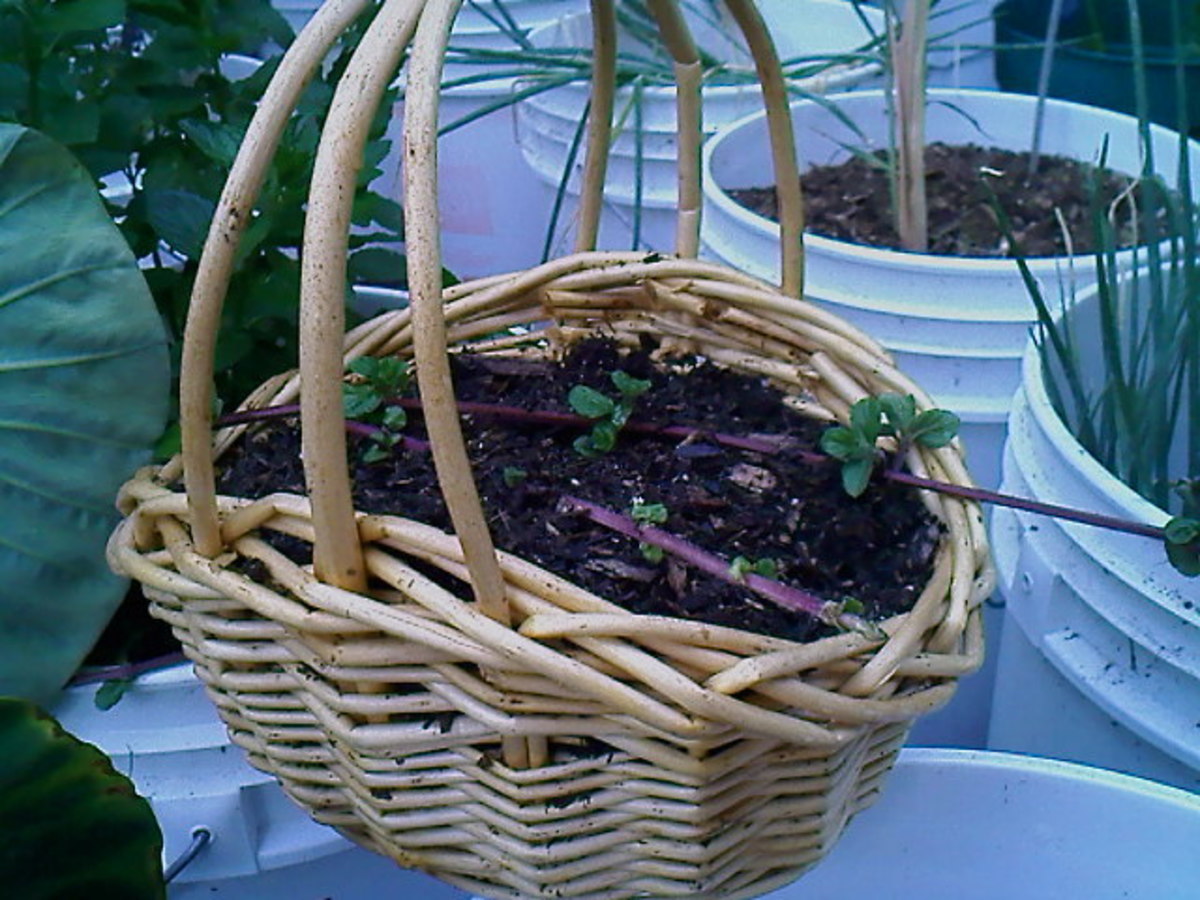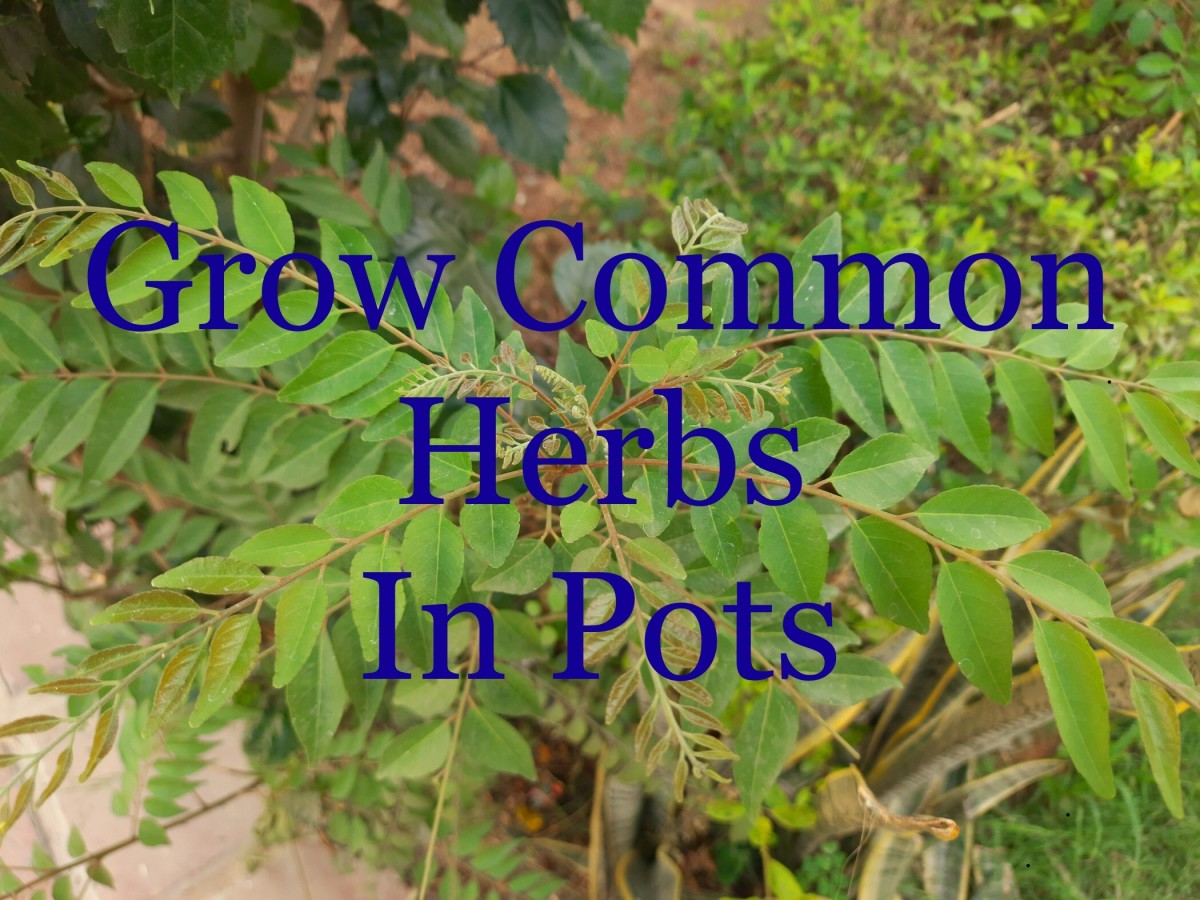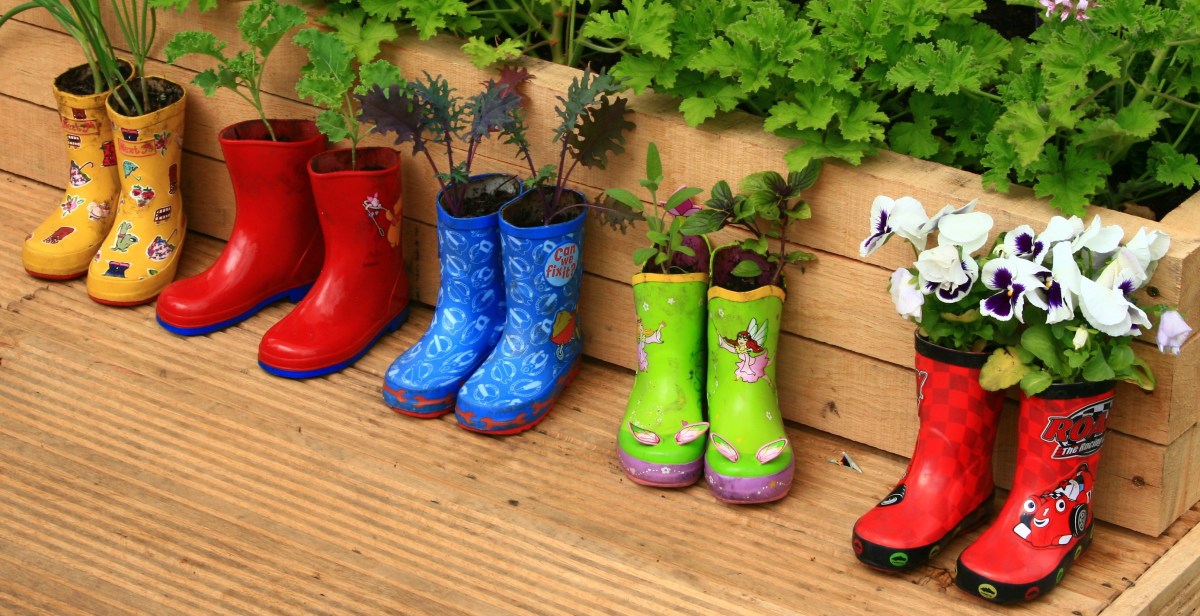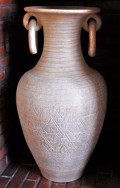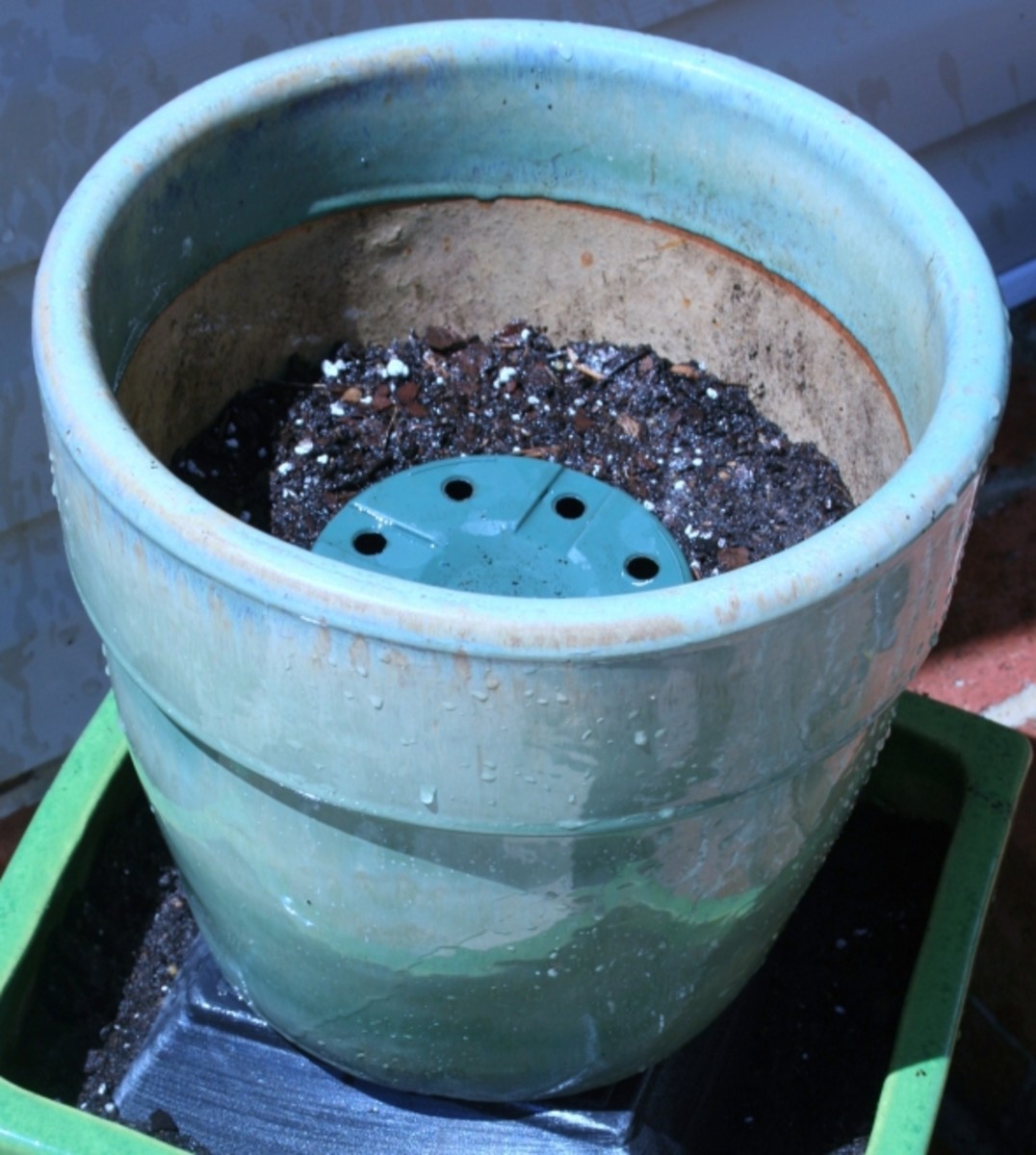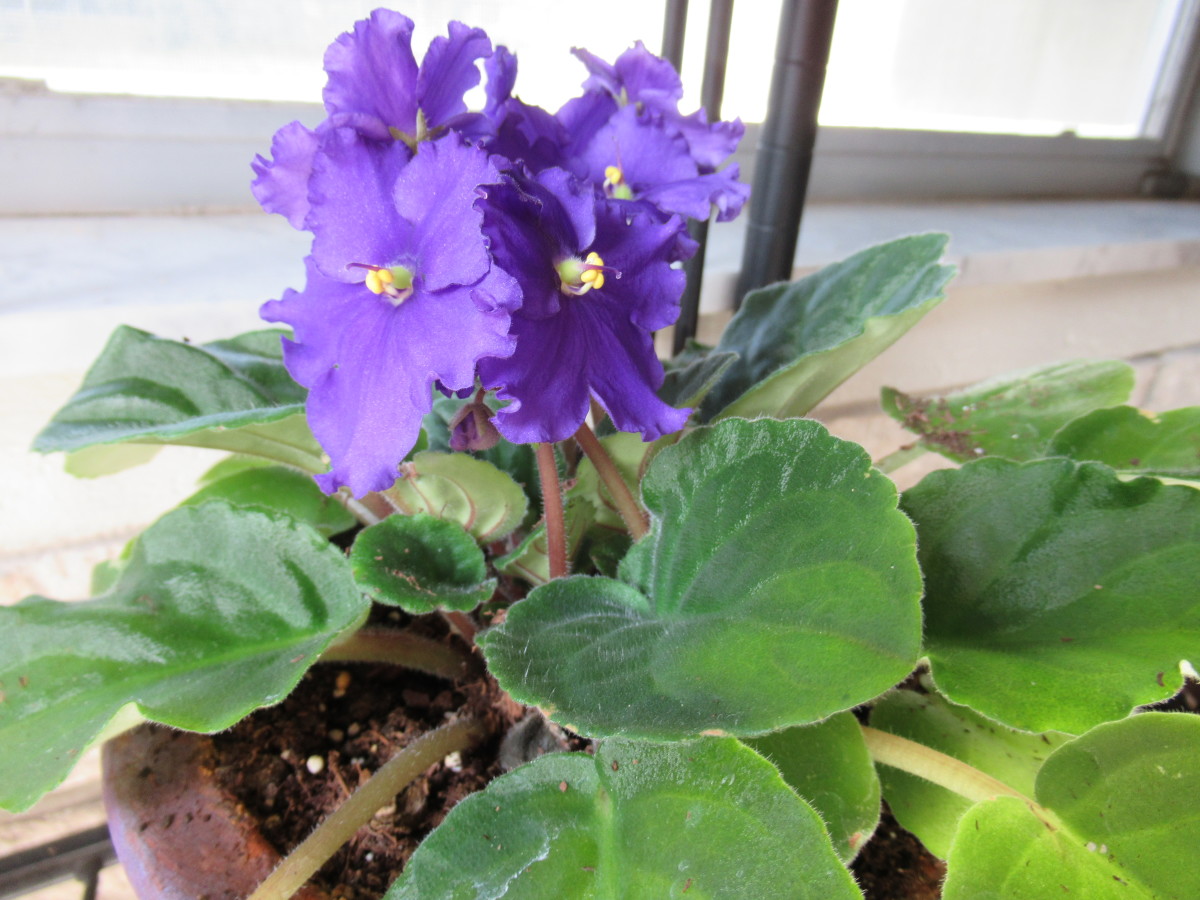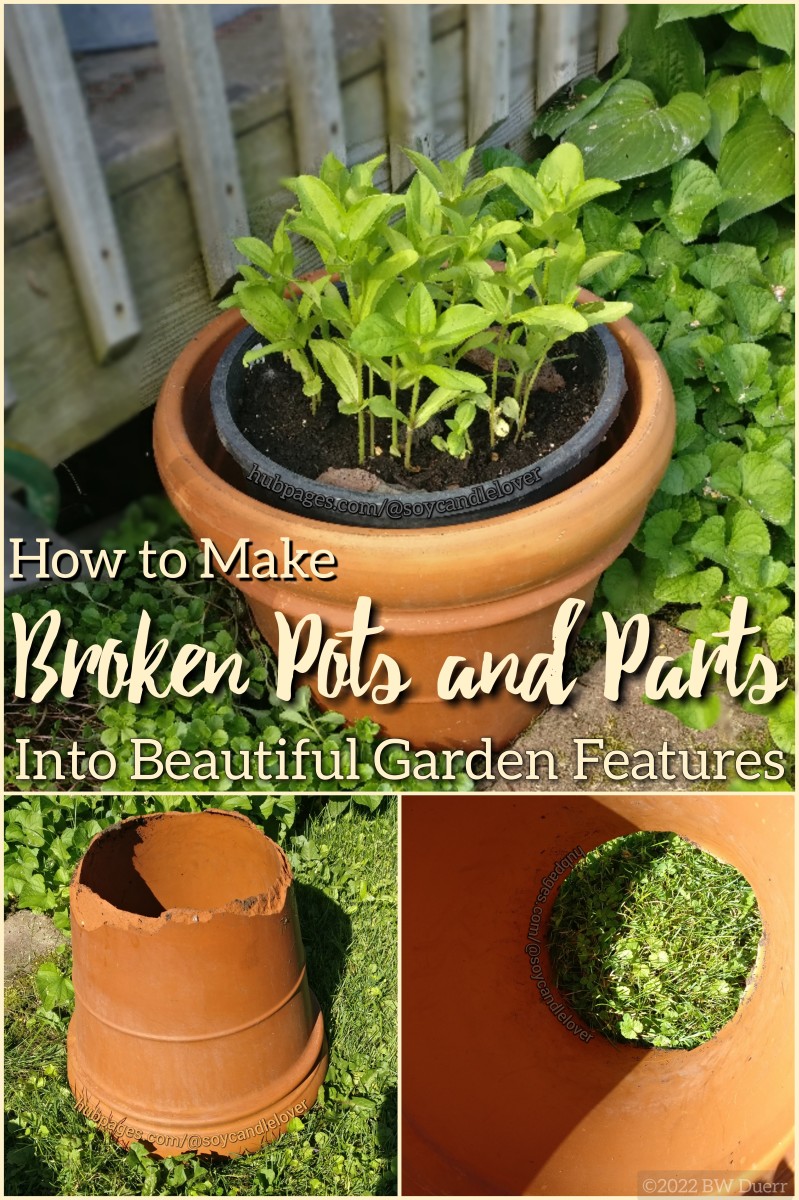Container Gardening for the Beginner
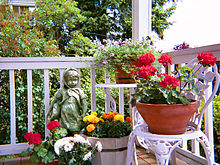
With urbanization on the rise in America, container and patio gardens are becoming ever more popular. Just because you live in an area with constraints, doesn't mean you can't have your garden too! All kinds of garden plants can be grown in pots. Most garden crops can be grown in containers.
Getting Started
Before you do anything, make sure the area you are using gets adequate sunlight for your garden. Garden plants generally need full sunlight. This means that they need at least six hours of direct sunlight between 10 a.m. and 6 p.m. This will ensure proper growth and production from your potted plants. If your garden is going to be outside, be sure that your pots aren't set directly on a concrete or asphalt surface. This is because the heat radiated from those surfaces will dry out your pots and may burn the plant. Putting wood underneath of your pots will allow your potted plants to retain water and keep plants from drying out or burning.
Pick Your Pot
Picking a pot size will depend on what you're planting. Round pots are best for planting things like peppers or tomatoes. Tomatoes should be planted in larger round pots, not smaller than 10". Peppers can be potted in smaller pots, but both should be planted with one plant per pot. Using large pots, you can plant cucumbers or other vining plants, so long as you have a trellis system for them. The trellis can be in the pot, if the pot is large enough, or it can be next to it. Either way, make sure that the trellis is able to hold some weight. Once your plants begin to fruit, they can become quite heavy.
Planter boxes can be used for root crops like onions, radishes, and garlic. They can also be advantageous for growing peas, green beans, etc. Advantageous because peas and beans are typically grown in rows, making it expensive to plant in single pots. Plant spacing would be the same as it would be in a conventional garden. The biggest thing to watch out for is that the planter box is deep enough to contain the root system. Onions and radishes are good choices because they do not root as deeply as some crops, such as carrots. For these, your box should be at least 6" deep. When planting root crops like onions and radishes, be sure that you plant early. These are traditionally early crops and grow best in cool conditions. Should you need to bring your plants inside to avoid frost, do not put them back outside until the temperature is at least 45 degrees. This will prevent shock, which can kill your crop.
Soils and Planting Tips
Once you've decided what pots to use, you'll need soil to plant in. Soil is easy to find at many retailers. The best soil to use in general is potting soil because it is high in organic content and usually has perlite mixed into it. Perlite comes as white granules you find in many soils for potted plants. If your looking to make your own potting soil, sphagnum peat moss and perlite can be mixed and used very successfully.
Planting your plants is the next step in the process. After you fill your pot to about two inches from the top of the pot, dig a hole a little larger than the size of your plant's root ball. Put the plant in up to the first set of leaves, cover with soil, and pack firmly. After you have planted your plants in their pots, water them thoroughly. Newly transplanted plants are sensitive and susceptible to shock. Using fertilizers may help your plantings take root but be careful. Over fertilizing will have an adverse effect and may "burn" your plants. Once planted and watered, an optional, but suggested, step is to use wood mulch to cover the rest of the empty space in your pots. The best type to use is cypress, as it does not attract pests and is not conducive to mold. For potted plants that are outside, it also aids in water conservation by keeping the sun from heating up the soil directly.
As your plants grow, they will begin to become heavy. Staking your plants as they grow may become necessary. This is especially true for plants like tomatoes and peppers. If they seem to have trouble staying upright, use a garden stake close to the stem without damaging the root system. Use hemp twine to secure the plant to the stake. Don't tightly secure them to the stake, because this can cause damage to the stem, and allow disease to enter. There should be some tension against the twine, but the plant should be able to move.
Now that you know the basics of potted gardening, start your gardens and reap the rewards of raising your own produce!
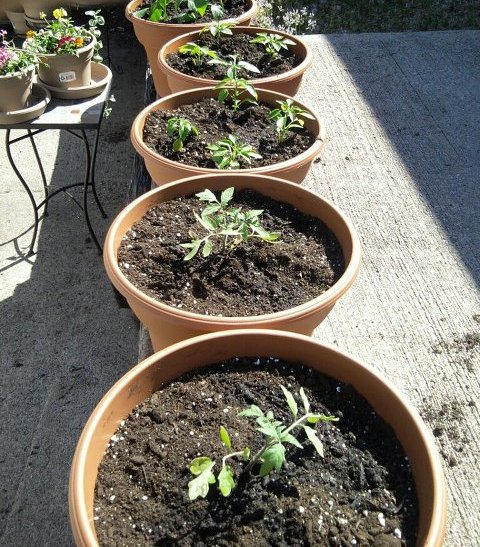
- The Gardener's Guide to Pests
Garden pests are a problem whether in conventional gardens or in potted gardens. This guide will help you identify what pests you have with descriptions and photos for easy identification. - Twenty Tips and Tricks to a Great Garden
There is a wealth of little tips and tricks out there to help make your garden the envy of the neighbors, and produce like gang busters. Like, when planting peppers, break a couple of match heads off, and put them in the hole. Peppers like sulfur. - Poor Soil? Your Plants are Telling You the Story
Your soil can have certain nutrient deficiencies. Know the warning signs can allow you to save your plants before it's too late.

